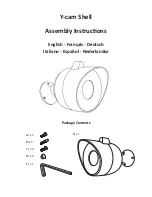
Chapter 3 - Interfaces and Communications
Confidential and Proprietary Information of ZTE CORPORATION
35
2. Supporting the identification of diversified frame types.
3. Supporting the transparent transmission of the L3 message between
L3 entities.
4. Sequence control, to maintain the sequence of frames connected
through data link.
5. Checking the format and operation errors in the data link layer.
6. Notifying the L3 entities to process the unrecoverable errors.
7. Flow control.
8. Supporting access of the burst solution mode after the RACH channel
access is instantly assigned.
In the ZXG10 OB06 (V1.0), LapDm is implemented in the LapDm module
of RSL.
The position of LapDm module in RSL is shown in Figure 18.
F
I G U R E
1 8
L
A P
D
M
M
O D U L E S
LapDm module
OAMM
FURRM
Physical layer
The LapDm module communicates with the physical layer and L3. The L3
protocol is processed in FURRM. OAMM configures the value of the timer
necessary for LapDm module to run.
The LapDm module provides two types of message transmission modes for
FURRM: I-frame multi-frame operation and UI frame operation. In terms
of frame structure, LapDm cancels the frame delimiter flag (FLAG) and the
FCS. In LapDm, the synchronization scheme of the radio interface can be
used to transmit the boundary message without the corresponding start
frame or end frame flags. The transmission scheme provided by the
physical layer of the Um interface boasts the error check function, so FCS
is not used for LapDm.
1. I-frame multi-frame operation
The L3 message is sent in the information frame mode which requires
the confirmation from the receiver. This mode provides a whole set of
control mechanism for error recovering and flow control, the
establishment mechanism and release mechanism for multi-frame
operations.
Summary of Contents for ZXG10 OB06
Page 2: ......
Page 4: ......
Page 6: ......
Page 10: ......
Page 88: ...74 Confidential and Proprietary Information of ZTE CORPORATION ...
















































